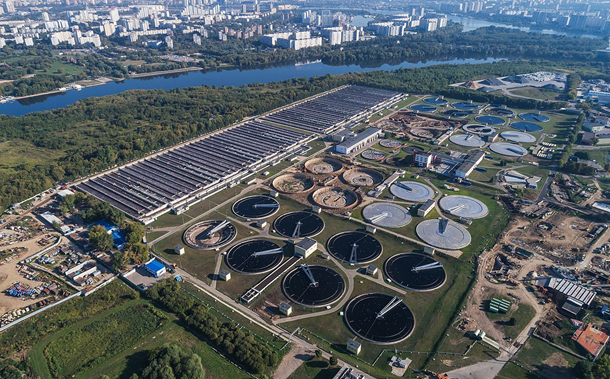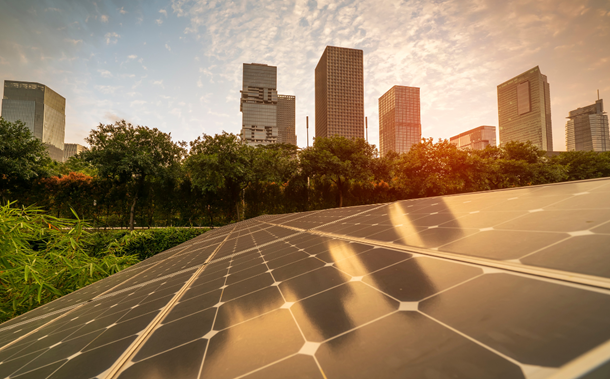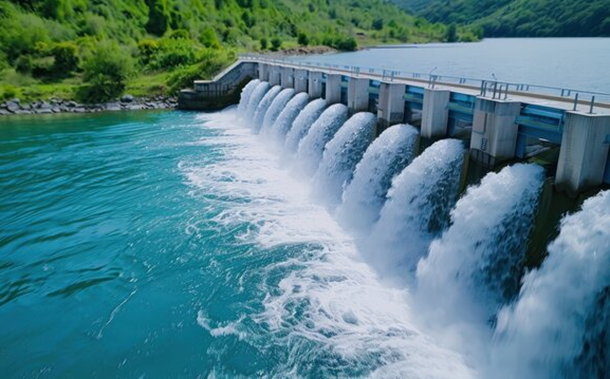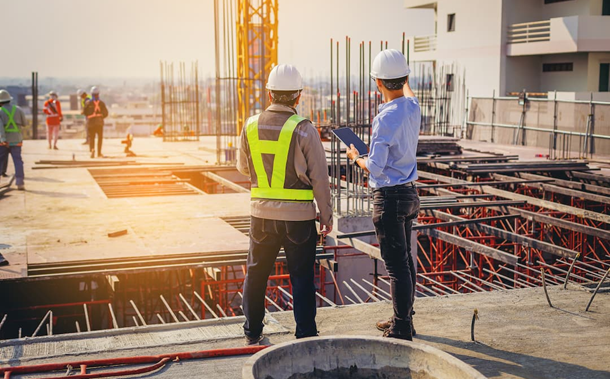Post-Earthquake Liquefaction Vulnerability Mapping by Swedish Weight Sounding and Standard Penetration Test
Downloads
Doi:10.28991/CEJ-2024-010-07-09
Full Text:PDF
Downloads
[2] Miyajima, M., Setiawan, H., Yoshida, M., Ono, Y., Kosa, K., Oktaviana, I. S., Martini, & Irdhiani. (2019). Geotechnical damage in the 2018 Sulawesi earthquake, Indonesia. Geoenvironmental Disasters, 6(1), 2–9. doi:10.1186/s40677-019-0121-0.
[3] Kramer, S. L., & Elgamal, A. W. M. (2001). Modeling soil liquefaction hazards for performance-based earthquake engineering. Pacific Earthquake Engineering Research Center, College of Engineering, University of California, Berkeley, United States.
[4] Seed, H. B., & Idriss, I. M. (1971). Simplified Procedure for Evaluating Soil Liquefaction Potential. Journal of the Soil Mechanics and Foundations Division, 97(9), 1249–1273. doi:10.1061/jsfeaq.0001662.
[5] Youd, T. L. (1973). Liquefaction, flow, and associated ground failure. Circular. doi:10.3133/cir688.
[6] Youd, T.L., Salazar, A. F., & Wallace, R. M. (1992). Bridge damage caused by liquefaction during the 22 April 1991 Costa Rica earthquake. Tenth world Conference on Earthquake Engineering, 19-24 July, 1992, Madrid, Spain.
[7] USGS. (2018). USGS ShakeMap of the 2018 Sulawesi earthquake. United States Geological Survey, Reston, United States. Available online: https://earthquake.usgs.gov/earthquakes/eventpage/us1000h3p4/shakemap/intensity (accessed on June 2024).
[8] Hidayat, R. (2019). Correlation of geological conditions and levels of damage in Palu earthquake. IOP Conference Series: Materials Science and Engineering, 650(1), 012022. doi:10.1088/1757-899X/650/1/012022.
[9] Hidayat, R. F., Kiyota, T., Tada, N., Hayakawa, J., & Nawir, H. (2020). Reconnaissance on liquefaction-induced flow failure caused by the 2018 Mw 7.5 sulawesi earthquake, palu, Indonesia. Journal of Engineering and Technological Sciences, 52(1), 51–65. doi:10.5614/j.eng.technol.sci.2020.52.1.4.
[10] Rohit, D., Hazarika, H., Maeda, T., Sumartini, W. O., Kokusho, T., Manafi Khajeh Pasha, S., & Nurdin, S. (2021). Forensic investigation of flowslides triggered by the 2018 Sulawesi earthquake. Progress in Earth and Planetary Science, 8(1). doi:10.1186/s40645-021-00452-5.
[11] Montgomery, J., Wartman, J., Reed, A. N., Gallant, A. P., Hutabarat, D., & Mason, H. B. (2021). Field reconnaissance data from GEER investigation of the 2018 MW 7.5 Palu-Donggala earthquake. Data in Brief, 34. doi:10.1016/j.dib.2021.106742.
[12] Jalil, A., Fathani, T. F., Satyarno, I., & Wilopo, W. (2021). Nonlinear site response analysis approach to investigate the effect of pore water pressure on liquefaction in Palu. IOP Conference Series: Earth and Environmental Science, 871(1). doi:10.1088/1755-1315/871/1/012053.
[13] Muhanifah, H., Adi, A. D., & Faris, F. (2021). Liquefaction investigation of Balaroa, Central Sulawesi on liquefied and non-liquefied areas. IOP Conference Series: Earth and Environmental Science, 861(5), 052039. doi:10.1088/1755-1315/861/5/052039.
[14] Namira, S. A., Fathani, T. F., & Adi, A. D. (2023). The analysis of liquefaction potential in Balaroa area, Palu City, Central Sulawesi. 2nd International Conference on Advanced Information Scientific Development (ICAISD) 2021: Innovating Scientific Learning for Deep Communication. doi:10.1063/5.0106281.
[15] Rahmawati, H. A., Prakoso, W. A., & Rahayu, A. (2020). Vs and CPT based evaluation of location with high liquefaction damage during 2018 Palu earthquake. IOP Conference Series: Materials Science and Engineering, 930(1), 012034. doi:10.1088/1757-899x/930/1/012034.
[16] Cipta, A., Rudyanto, A., Afif, H., Robiana, R., Solikhin, A., Omang, A., Supartoyo, & Hidayati, S. (2021). Unearthing the buried Palu–koro fault and the pattern of damage caused by the 2018 Sulawesi earthquake using HVSR inversion. Geological Society Special Publication, 501(1), 185–203. doi:10.1144/SP501-2019-70.
[17] Jalil, A., Fathani, T. F., Satyarno, I., & Wilopo, W. (2021). Liquefaction in Palu: the cause of massive mudflows. Geoenvironmental Disasters, 8(1). doi:10.1186/s40677-021-00194-y.
[18] Silalahi, D. (2023). Study of Liquefied Soil Properties Using the Swedish Weight Sounding Test in Balaroa Village. Ph.D. Thesis, Universitas Tadulako, Palu, Indonesia. (In Indonesian).
[19] Japan International Cooperation Agency (JICA). (2019). The Project for Development of Refional Disaster Risk Resilence Plan in Central Sulawesi in the Republic of Indonesia. Japan International Cooperation Agency (JICA), Chiyoda, Japan.
[20] Tsukamoto, Y., Ishihara, K., & Sawada, S. (2004). Correlation between penetration resistance of Swedish weight sounding tests and SPT blow counts in sandy soils. Soils and Foundations, 44(3), 13–24. doi:10.3208/sandf.44.3_13.
[21] Bergdahl, U., Broms, B. B., & Muromachi, T. (1988). Weight sounding test (WST): International reference test procedure. International Symposium on penetration testing; ISOPT-1, 20-24 March, 1988, Orlando, United States.
[22] Habibi, M., Cheshomi, A., & Fakher, A. (2006). A case study of liquefaction assessment using Swedish Weight Sounding. 4th International Conference on Earthquake Engineering, 12-13 October, 2006, Taipei, Taiwan.
[23] Armario, M. J. P., Follosco, M. P. V., Gargullo, J. M. B., Lu, P. A. R., & Luna, R. A. C. (2023). Swedish weight sounding test: Site investigation for a solar power facility in the Philippines. Smart Geotechnics for Smart Societies, 2060–2065, CRC Press, Boca Raton, United States. doi:10.1201/9781003299127-315.
[24] Muhamad, Y., Elisabeth T., B., & S.A, N. (2020). Swedish Weight Sounding: A prospective portable soil investigation tools for liquefaction assessment of residential houses in Indonesia. E3S Web of Conferences, 156, 02010. doi:10.1051/e3sconf/202015602010.
[25] Saro, N., Shimomura, S., Kawamura, M., Shiokawa, H., & Kataoka, S. (2018). Soil classification method using screw point-soil fricative sound by Swedish weight sounding. Journal of Structural and Construction Engineering, 83(743), 111–121. doi:10.3130/aijs.83.111.
[26] Tiwari, B., Pradel, D., & Ajmera, B. (2018). Equations to Calculate the Undrained Shear Strength of Lacustrine Soil Deposit with Swedish Cone Equipment. IFCEE 2018. doi:10.1061/9780784481585.004.
[27] BPS. (2020). West Palu District in Figures. Kota Palu, Badan Pusat Statistik Indonesia (BPS), Jakarta, Indonesia.
[28] Kiyota, T., Furuichi, H., Hidayat, R. F., Tada, N., & Nawir, H. (2020). Overview of long-distance flow-slide caused by the 2018 Sulawesi earthquake, Indonesia. Soils and Foundations, 60(3), 722–735. doi:10.1016/j.sandf.2020.03.015.
[29] Google Earth (2024). Google Earth Pro, Google, Mountain View, United States. Available online: https://earth.google.com (accessed on June 2024).
[30] Habibi, M., Cheshomi, A., & Fakher, A. (2007). Advantages and Disadvantages of Using Swedish Weight Sounding for Liquefaction Assessment. 4th International Conference on Earthquake Geotechnical Engineering, 25-28 June, 2007, Thessaloniki, Greece.
[31] Pitts, J. (1990). The use of Swedish ram sounding and weight sounding in residual soils and weathered rocks. Geological Society, London, Engineering Geology Special Publications, 6(1), 161-171. doi:10.1144/GSL.ENG.1990.006.01.17.
[32] Clayton, C. R. I., Matthews, M. C., & Simons, N. E. (1995). Site Investigation (2nd Edition). Wiley-Blackwell, Hoboken, United States.
[33] Taylor, M. L., & Cubrinovski, M. (2011). Preliminary assessment of liquefaction in urban areas following the 2010 Darfield Earthquake. Proceedings of the Ninth Pacific Conference on Earthquake Engineering: Building an Earthquake-Resilient Society, 14-16 April, 2011, Auckland, New Zealand.
[34] Orense, R. P., Mirjafari, Y., & Suemasa, N. (2019). Screw driving sounding: A new test for field characterisation. Geotechnical Research, 6(1), 28–38. doi:10.1680/jgere.18.00024.
[35] Tsukamoto, Y., Hyodo, T., & Hashimoto, K. (2016). Evaluation of liquefaction resistance of soils from Swedish weight sounding tests. Soils and Foundations, 56(1), 104–114. doi:10.1016/j.sandf.2016.01.008.
[36] Inada, M. (1960). Use of Swedish weight sounding test. Soils and Foundations, 8(1), 13–18.
[37] Idriss, I. M., & Boulanger, R. W. (2008). Soil liquefaction during earthquakes. Earthquake Engineering Research Institute, Oakland, United States.
[38] Mase, L. Z. (2018). Reliability Study of the Liquefaction Analysis Method Using SPT Due to the 8.6 Mw Earthquake, 12 September 2007 in the Coastal Area of Bengkulu City. Jurnal Teknik Sipil, 25(1), 53. doi:10.5614/jts.2018.25.1.7.
[39] Luna, R., & Frost, J. D. (1998). Spatial Liquefaction Analysis System. Journal of Computing in Civil Engineering, 12(1), 48–56. doi:10.1061/(asce)0887-3801(1998)12:1(48).
[40] Iwasaki, T., Tokida, K., & Tatsuoka, F. (1981). Soil liquefaction potential evaluation with use of the simplified procedure. First International Conferences on Recent Advances in Geotechnical Earthquake Engineering and Soil Dynamics, 26 April- 3 May, 1981, St. Louis, United States.
[41] Iwasaki, T., Arakawa, T., & Tokida, K. I. (1984). Simplified procedures for assessing soil liquefaction during earthquakes. International Journal of Soil Dynamics and Earthquake Engineering, 3(1), 49–58. doi:10.1016/0261-7277(84)90027-5.
[42] Iwasaki, T. (1986). Soil liquefaction studies in Japan: state-of-the-art. Soil Dynamics and Earthquake Engineering, 5(1), 2–68. doi:10.1016/0267-7261(86)90024-2.
[43] Tatsuoka, F., Iwasaki, T., Tokida, K.-I., Yasuda, S., Hirose, M., Imai, T., & Kon-No, M. (1980). Standard Penetration Tests and Soil Liquefaction Potential Evaluation. Soils and Foundations, 20(4), 95–111. doi:10.3208/sandf1972.20.4_95.
[44] Toprak, S., & Holzer, T. L. (2003). Liquefaction Potential Index: Field Assessment. Journal of Geotechnical and Geoenvironmental Engineering, 129(4), 315–322. doi:10.1061/(asce)1090-0241(2003)129:4(315).
[45] Hayati, H., & Andrus, R. D. (2008). Liquefaction Potential Map of Charleston, South Carolina Based on the 1886 Earthquake. Journal of Geotechnical and Geoenvironmental Engineering, 134(6), 815–828. doi:10.1061/(asce)1090-0241(2008)134:6(815).
[46] SNI 03:1726:2019. (2019). Procedures for Earthquake Resistance Planning for Building and Non-Building Structures. Badan Standardisasi Nasional, Jakarta, Indonesia. (In Indonesian).
[47] Pusgen. (2021). Indonesian Design Response Spectrum Application 2021 Directorate General of Human Settlements. Kementerian PUPR. Available online: https://rsa.ciptakarya.pu.go.id/2021/ (accessed on June 2024). (In Indonesian).
[48] Youd, T. L. (2003). 70 Liquefaction mechanisms and induced ground failure. International Handbook of Earthquake and Engineering Seismology, 1159–1173, Elsevier, Amsterdam, Netherlands. doi:10.1016/s0074-6142(03)80184-5.
[49] Soekamto, R. A. B., Sumadirdja, H., Suptadar, T., Hardjoprawiro, S. & Sudana, D. (1973). Palu Sheet Geological Map, Scale 1: 250,000, Sulawesi. Housing and Settlement Research and Development Center, Geological Research and Development Agency, Bandung, Indonesia. (In Indonesian).
[50] Tadulako Geoexploring Service. (2022). Geoelectrical Measurement Report Wenner Configuration Liquefaction Location, Balaroa Village, Palu City. Tadulako Geoexploring Service, Indonesia. (In Indonesian).
- Authors retain all copyrights. It is noticeable that authors will not be forced to sign any copyright transfer agreements.
- This work (including HTML and PDF Files) is licensed under a Creative Commons Attribution 4.0 International License.![]()














